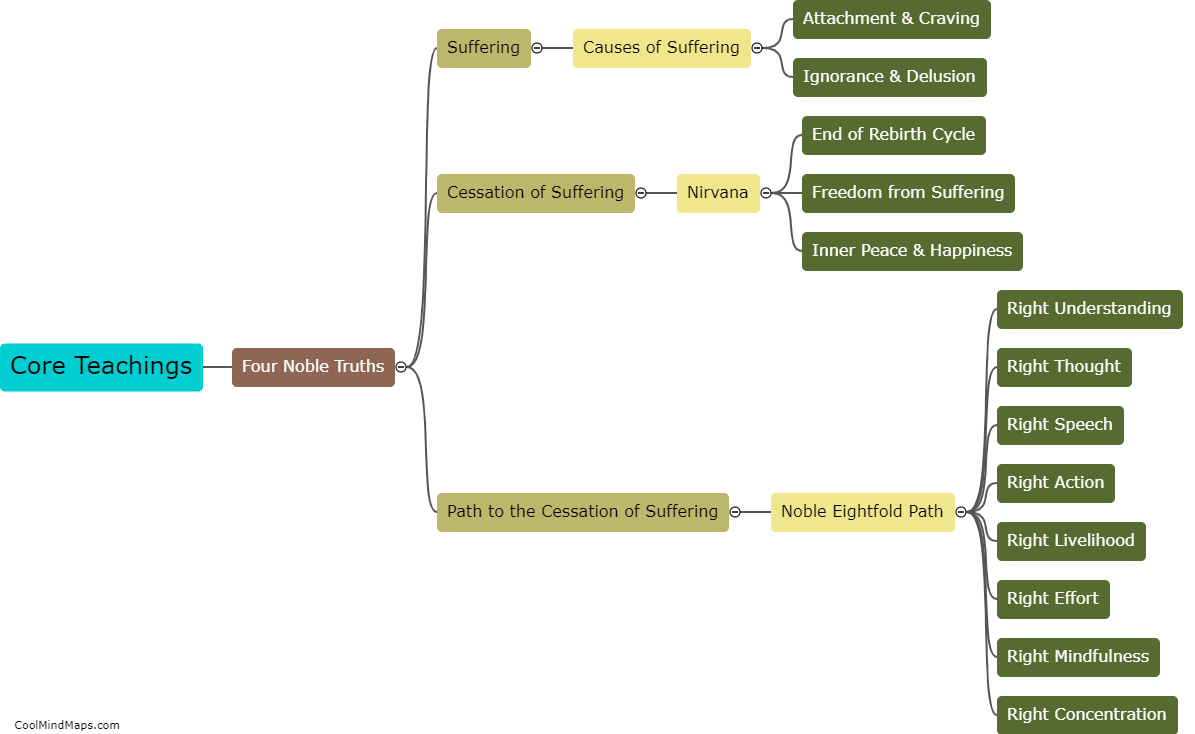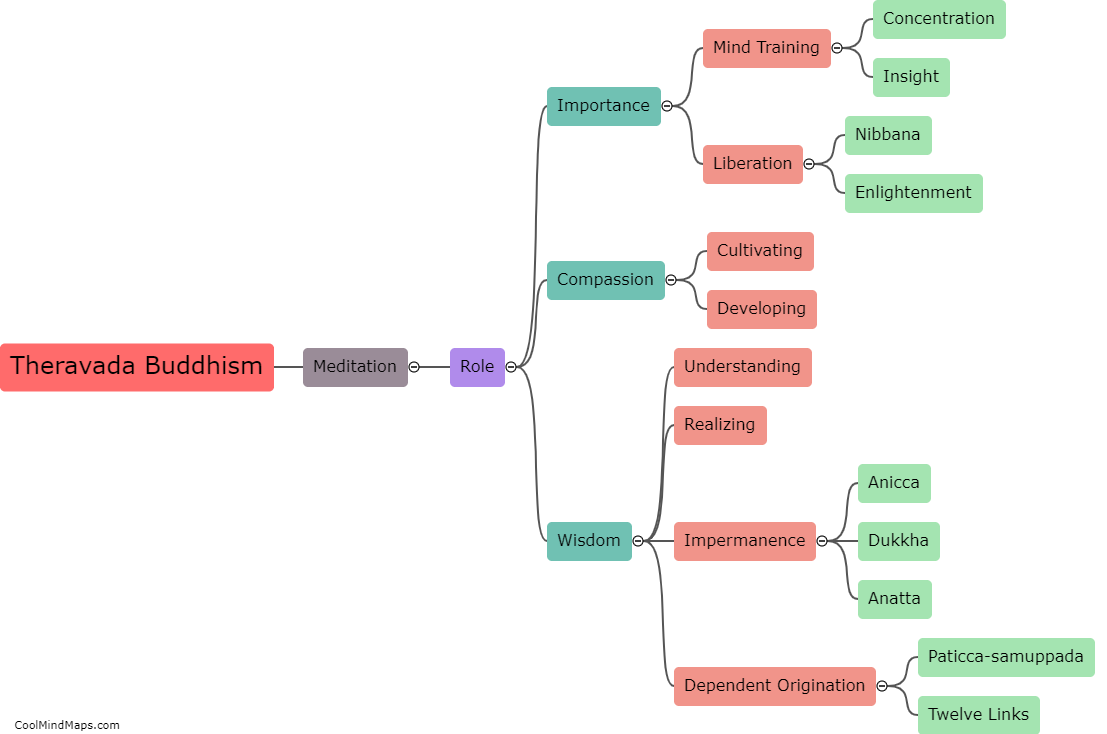What are the key practices in Theravada Buddhism?
Theravada Buddhism, often referred to as the 'School of the Elders', is one of the two major branches of Buddhism, the other being Mahayana. It emphasizes the original teachings of the Buddha and places great significance on the Pali Canon, a collection of scriptures containing the Buddha's discourses. The key practices in Theravada Buddhism revolve around the Four Noble Truths, which are the foundation of the Buddhist teachings. These practices involve developing wisdom through the observation of one's own mind and body, cultivating morality through the observance of ethical principles, and practicing concentration through meditation. Additionally, the Theravada tradition places great emphasis on the monastic path, with monks and nuns dedicating their lives to the pursuit of spiritual development and guiding lay practitioners on the path to liberation.

This mind map was published on 12 September 2023 and has been viewed 102 times.











